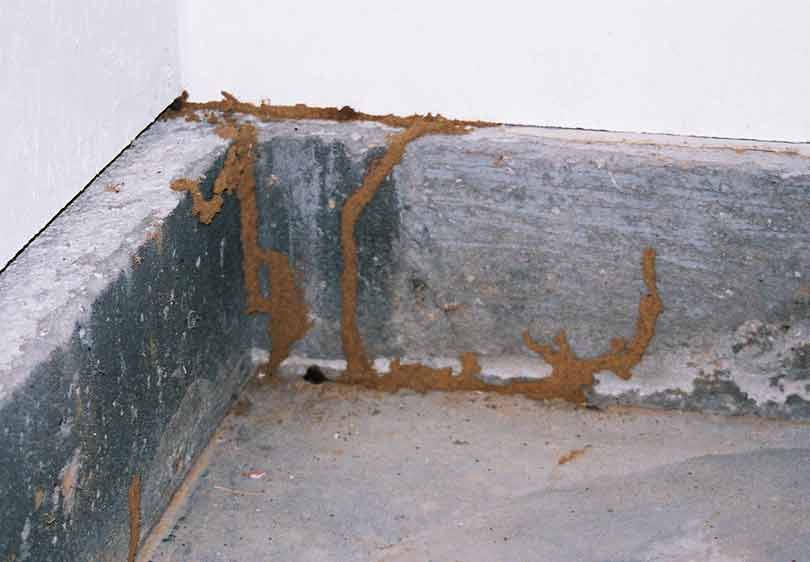Reliable Parasite Control Solutions for Vole Infestations

In the world of insect control, vole invasions offer a distinct obstacle that demands a calculated strategy. These small rodents, usually mistaken for mice, can create considerable damages to gardens, yards, and plants if left uncontrolled. As residential property owners face the nuisance of voles tunneling with their landscapes, the pursuit for effective services ends up being extremely important. By delving into the complexities of vole habits and checking out a variety of control techniques, a thorough pest management plan tailored to these elusive creatures can be crafted. From natural repellents to ingenious capturing methods, the collection versus vole invasions is multi-faceted. The integration of various approaches under an overarching pest control technique provides an appealing path towards mitigating vole-related obstacles.
Understanding Vole Behavior
Voles, little rodents typically found in yards and areas, display distinctive actions patterns that are vital to comprehend when implementing bug control measures - best vole pest control. These creatures are respected diggers, developing a substantial network of tunnels underground where they nest, shop food, and seek sanctuary from predators and severe weather. Voles are herbivores and largely feed upon grasses, bulbs, roots, and seeds, making fields and yards ideal habitats for them
One trick behavior of voles is their fast rate of recreation. Ladies can bring to life numerous litters annually, with clutter sizes ranging from 3 to six puppies. This high reproductive capability allows vole populations to swiftly increase, resulting in problems if left unchecked.
Comprehending vole actions additionally involves acknowledging their patterns of activity and foraging. Voles create surface runways in verdant locations as they take a trip between their burrows and food sources. By observing these runways and the places of burrow entries, parasite control experts can identify high-traffic locations and strategically place traps or deterrents to successfully take care of vole populaces.
All-natural Repellents and Deterrents
With an understanding of vole actions as a foundation, checking out natural repellents and deterrents becomes essential in properly taking care of vole invasions in fields and yards. In addition, integrating predator pee, such as that of foxes or prairie wolves, around the garden perimeter can develop a natural barrier that signifies risk to voles, encouraging them to remain away.
In addition, using castor oil-based repellents can interfere with vole tunnels as they discover the smell and preference unpleasant, triggering them to transfer. Mulching with products like gravel, lava rocks, or rugged sand can also prevent voles as they do not like digging via these rough compounds. Implementing a combination of these all-natural repellents and deterrents can help properly manage vole populaces in a non-toxic and sustainable manner, guarding crops and gardens from vole damages.
Capturing Techniques for Voles

Snap catches are created to kill voles immediately upon activation. These catches should be put in areas where voles are understood to travel, such as close to burrow entrances or along their paths. It is important to check snap catches on a regular basis and deal with any caught voles see this quickly to make certain the efficiency of the capturing process.
Live catches are an extra humane alternative for those who desire to catch voles without harming them. When a vole is captured in a live catch, it can be securely delivered to a different place and released unhurt. Live catches should be inspected regularly to avoid stress and anxiety or harm to the caught voles.
When establishing catches for voles, it is important to consider their actions and habits to enhance the chance of success (best vole pest control). By using the suitable trapping strategies, vole populaces can be effectively handled, minimizing the damages they create to agricultural and garden areas
Carrying Out Physical Obstacles
To additionally fortify the defense against vole problems, the critical execution of physical barriers emerges as a proactive action to guard farming and garden areas. Physical obstacles such as wire mesh, equipment towel, or fences can be installed below ground to stop voles from tunneling into yards or check out this site areas.
In addition, making use of tree guards or trunk wraps constructed from steel or plastic can shield tree trunks from vole damages throughout cold weather when various other food resources are scarce. These guards need to prolong above the anticipated snow line to avoid voles from gnawing on the bark. Regular examination and upkeep of these barriers are crucial to ensure their continued efficiency in discouraging vole intrusions and shielding important plants and plants.
Integrated Bug Management Methods
Integrating numerous insect control approaches, consisting of organic controls, habitat adjustment, and monitoring, creates the basis of effective Integrated Bug Administration strategies for attending to vole invasions. Biological controls involve introducing natural killers of voles, such as owls or serpents, to the damaged area to assist decrease vole populations.
Conclusion
To conclude, reliable insect control services for vole problems include recognizing vole habits, utilizing all-natural repellents and deterrents, carrying out trapping methods, and establishing physical barriers. Integrated pest management methods can likewise be used to deal with vole problems comprehensively. By combining these methods, homeowner can properly handle and alleviate vole populaces without the requirement for extreme chemical usage.
With an understanding of vole actions as a foundation, discovering natural repellents and deterrents becomes important in successfully taking care of vole invasions in areas and yards. Carrying out a mix of these all-natural repellents and deterrents can assist effectively manage vole populaces in a lasting click here to find out more and safe way, safeguarding crops and gardens from vole damage.
Integrating numerous parasite control methods, consisting of organic controls, environment control, and surveillance, forms the basis of reliable Integrated Pest Monitoring techniques for dealing with vole problems. Organic controls include introducing natural killers of voles, such as snakes or owls, to the affected area to aid minimize vole populations (vole control utah county).In verdict, efficient insect control services for vole invasions include understanding vole behavior, making use of natural repellents and deterrents, applying capturing techniques, and setting up physical barriers